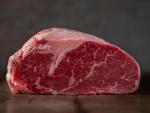The humble hotpot has been the catalyst for phenomenal growth of the red meat market in China, Silver Fern Farms (SFF) chief executive Dean Hamilton says.
In fact, most of SFF's red meat export growth has been based on the dish in restaurant chains.
During 15 years of exporting to China it had been slow growth. Primarily one or two relatively cheap lamb products went into the hotpot business in a north-eastern region.
But business with China has grown phenomenally in the last five years from $50 million to $330m annually, Hamilton says. A big contributor has been hotpots' rising popularity nationwide via restaurant chains offering everything from relatively cheap dishes to silver service.
Variations on the dish have expanded to include mutton and beef.
Four things have happened during these five years of phenomenal growth, says Hamilton. The lamb business has hugely diversified: two products that
were 85% of the lamb the company sold to China now account for
40%.
They have moved into mutton and beef. The beef business has gone from $3m of sales five years ago to $160m in the 12 months just ended.
"You can see the phenomenal growth we are experiencing, such that we are selling more beef than sheepmeat," he says.











